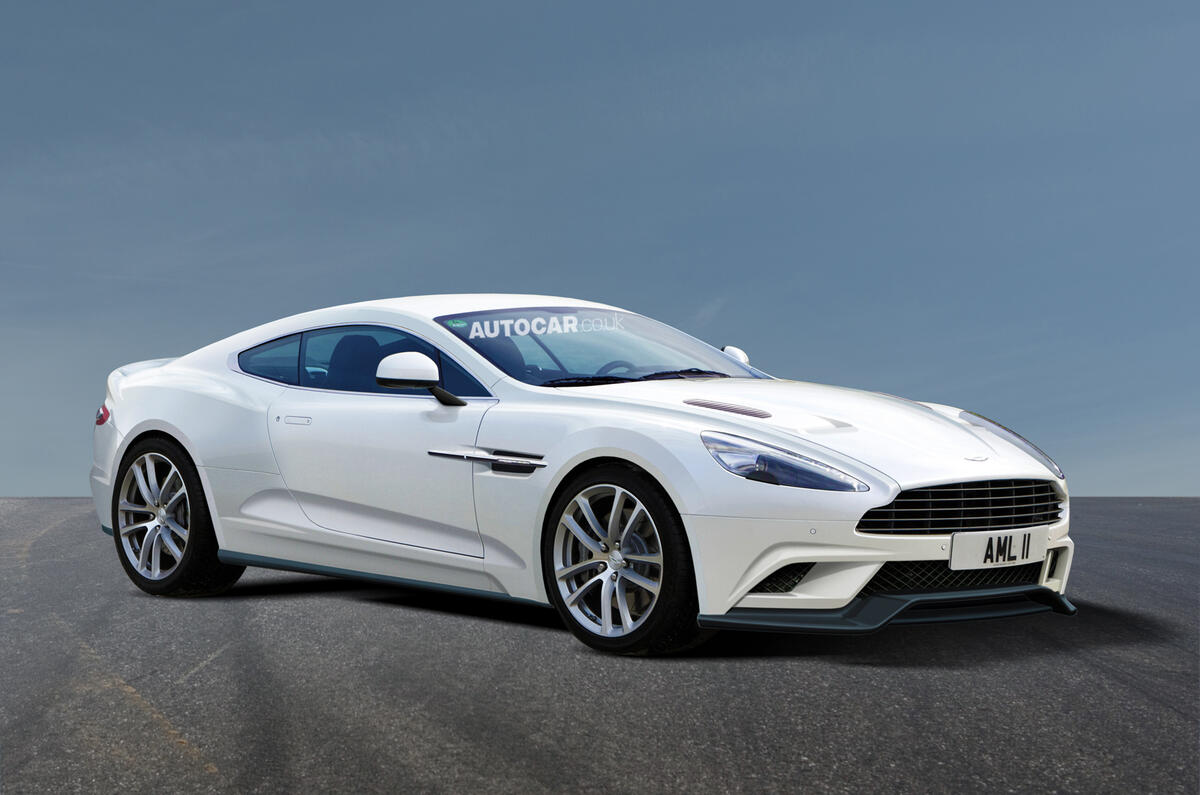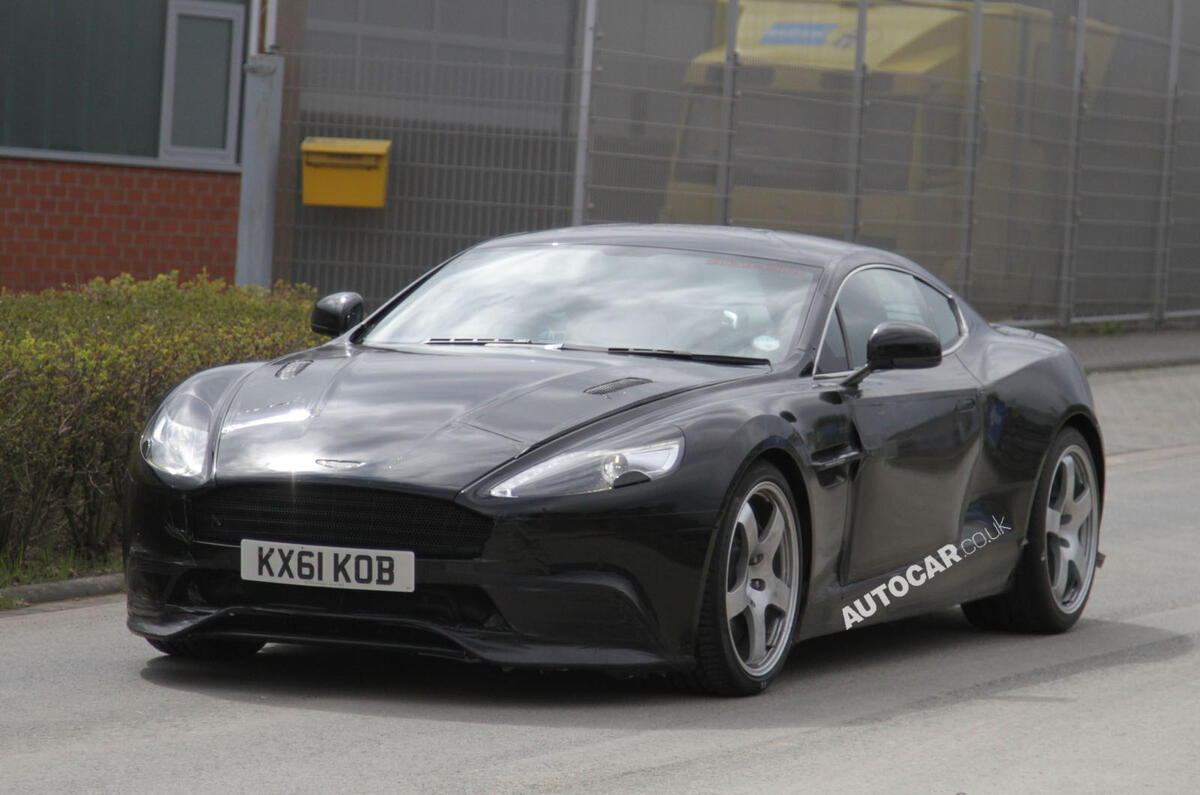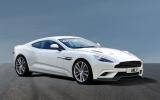A new 550bhp Aston Martin DBS replacement will spearhead the most significant revamp of the company’s model range since the relaunch of the iconic British sports car maker in 2003.
Seen here in Autocar’s exclusive artist’s impression, the more powerful, part-carbonfibre-bodied DBS successor seeks to recreate the muscle car magic of the late 1990s Vanquish.
The basic formula of the new DBS will remain unchanged. It will have a front-mounted 6.0-litre V12 engine, a transaxle gearbox and wishbone suspension, all underpinned by the ‘VH’ bonded and riveted alloy frame.
Despite the carried-over platform, a significant share of the unseen parts and most of the visible and tactile details of project VH310, as the car is known internally, are new.
To reinforce the message that the car is new, Aston is considering ditching the DBS name in favour of a new moniker.
The outer panels have all been retooled to give more aggressive looks, inspired by the £1.2 million One-77. There’s more carbonfibre and the cabin is higher in quality. The aim is to create more differentiation between it and the £150k Virage, introduced last year.
It will break the visual link with the DB9 by having a unique body, rather than relying on detailing add-ons and body kits, which is a criticism of the current model.
The rear wings are said to be fashioned from carbonfibre, like the front wings, bonnet and bootlid of today’s DBS.
Aston’s hallmark grille remains as a key styling feature, but the wider shape adds visual substance to the DBS’s stance. Another notable change is a more curvaceous bonnet, which bulges over the engine.
All the V12-engined model VH platform models will feature the raised bonnet line, which is needed to comply with the latest pedestrian protection rules. They demand more clearance above the tall V12, so the DB9 (project VH113), Virage and Rapide will feature it, too.
The Vantage family (VH200) is understood to be unaffected, largely because its dry-sump V8 is mounted lower, which leaves sufficient room above the engine.
In fact, all the V12 models, which make up about three-quarters of Aston’s 4000 annual production, will get the same underskin improvements to the VH platform.
This 2013-model-year range is vital for Aston. It has to keep Aston’s range fresh and exciting until global financial markets recover and finances can be topped up to fund a new alloy platform for the next generation of cars — codenamed VH500 (V12 cars) and VH600 (V8 cars) and known internally as the ‘alloy evolution’ models — towards the end of the decade.








Join the debate
Add your comment
Wow!! Aston's design team
Wow!! Aston's design team have woken up and they've clearly been having some wacky dreams. This looks absolutely epic!
I cant see how this Aston is
I cant see how this Aston is a new ferrari Rival, they are completely different in my opinion, looks great though, love astons and cant wait for this
Its about time they designed
Its about time they designed a new engine, this one is well past its sell by date, seeing as its 2 Ford V6's from the previous generation Mondeo ST220 stuck together.